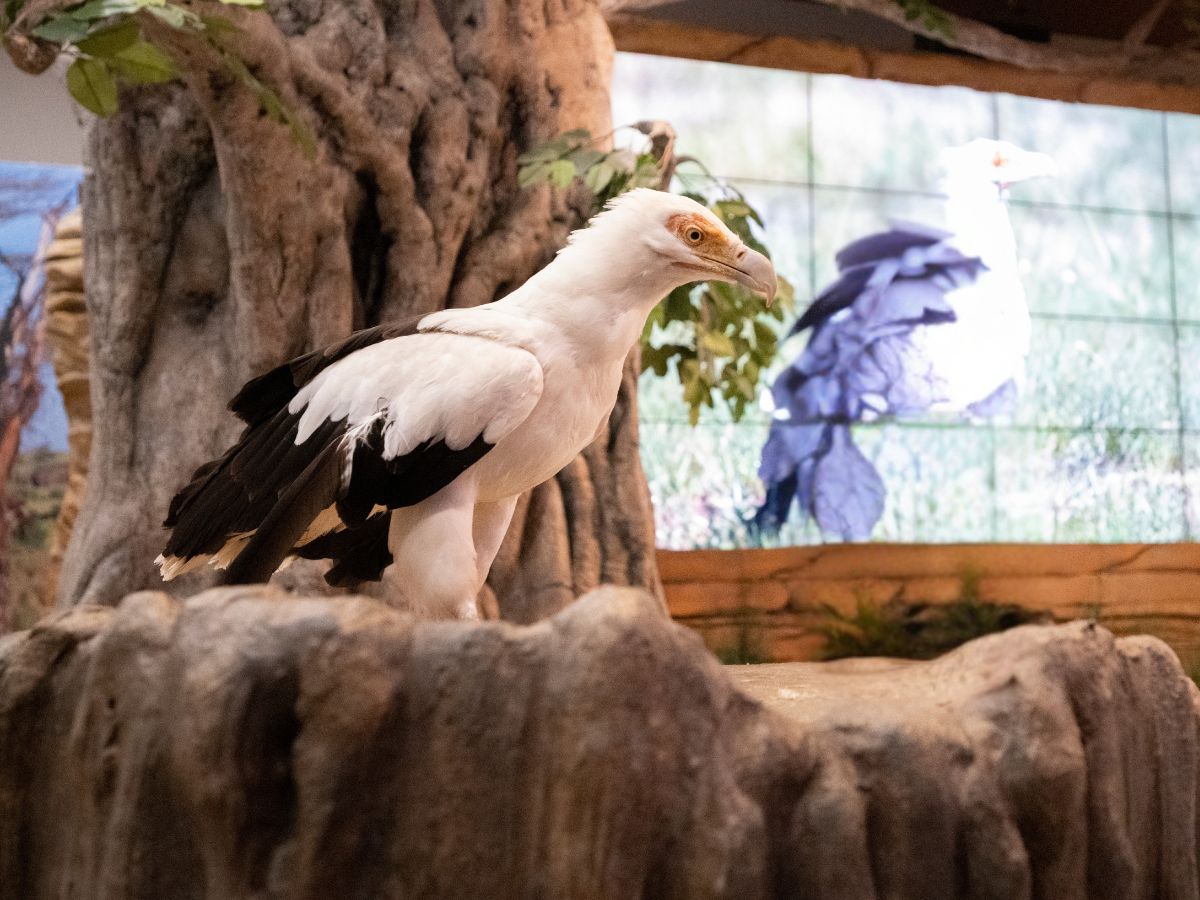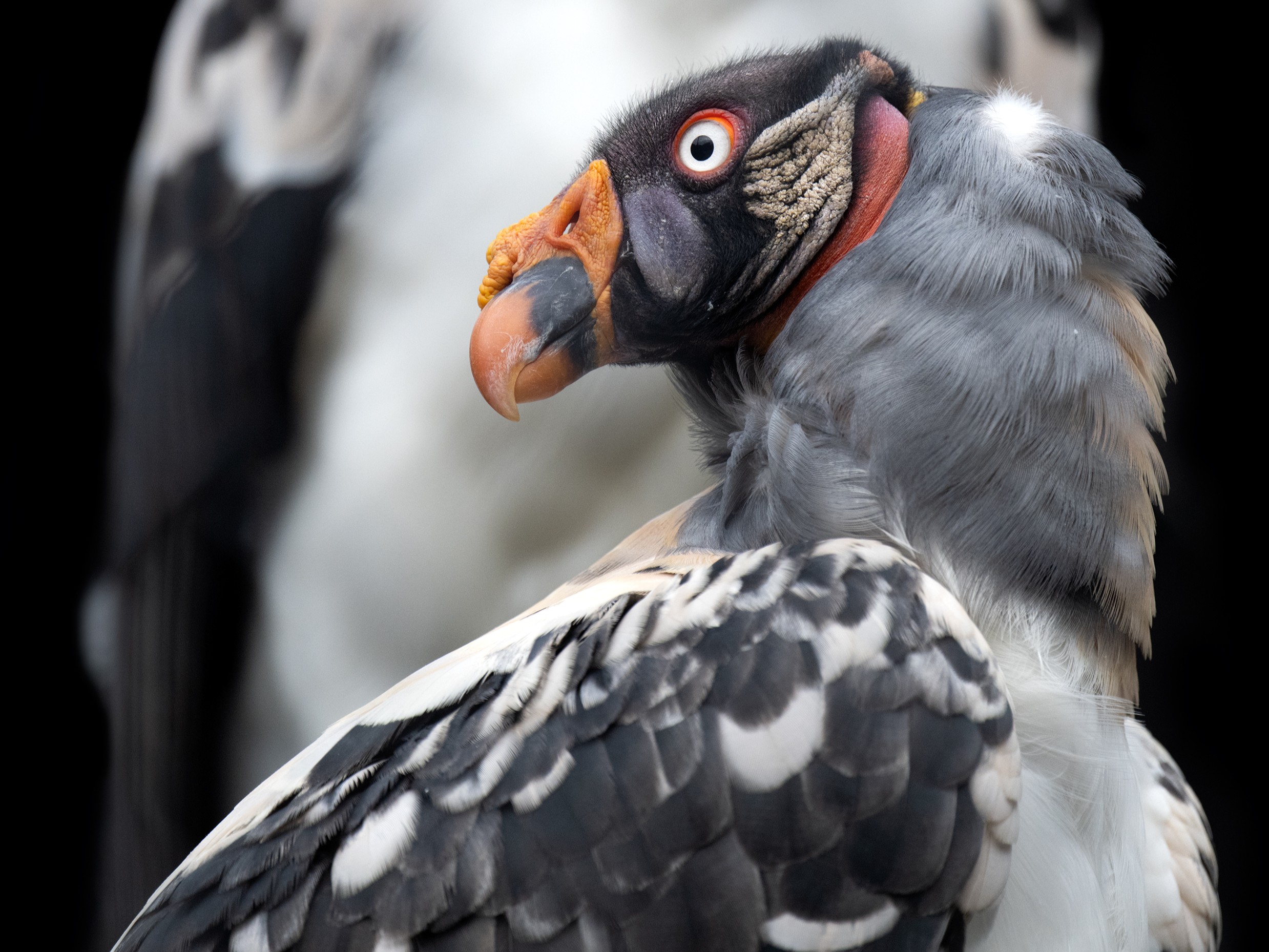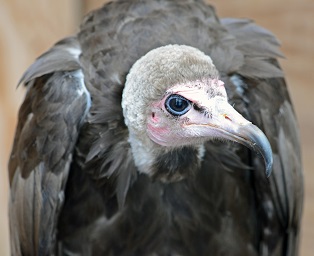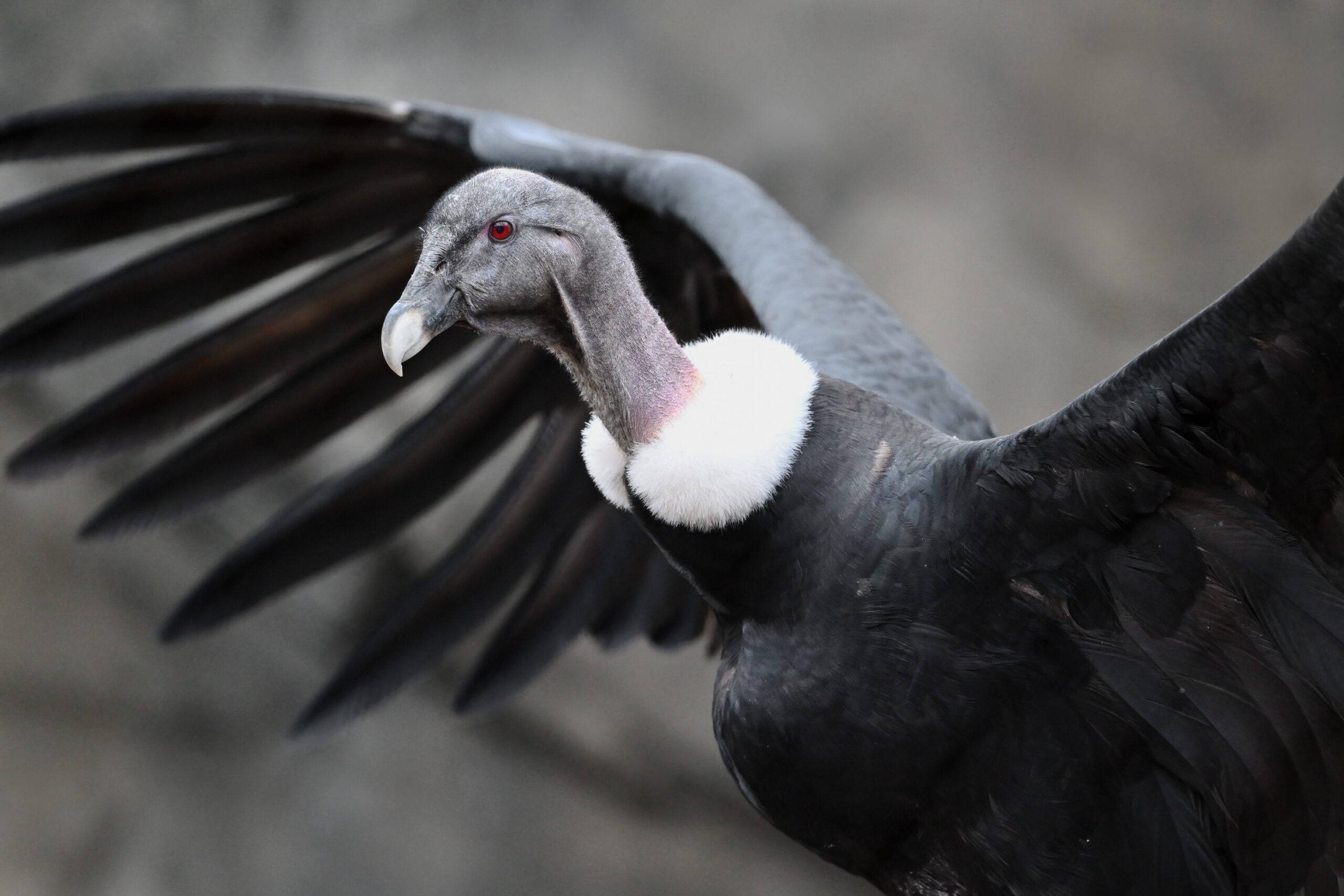
A striking black and white vulture of Sub-Saharan Africa, the Palm-nut Vulture is found along the edges of tropical forests, large rivers, lakes, and seashores, especially where oil palms abound. Unlike other vultures, the Palm-nut Vulture feeds only occasionally on smaller carrion – and rarely at large animal carcasses – and instead specializes its feeding…
Read More
The third largest of the vultures of the Americas, the King Vulture has one of the strongest beaks out of all the American vultures and is able to open carcasses that the others cannot. While some of its food may be dead fish or lizards, other times it feeds on sloths, monkeys, or cattle. This…
Read More
The Critically Endangered Hooded Vulture is a rather small, brown vulture, native to Sub-Saharan Africa. This species mainly occupies open woodland and savanna, but also forest edge, where if feeds on carrion and human food scraps. Unlike other vultures which mostly construct their nests on cliffs or buildings, the Hooded Vulture makes a stick nest…
Read More
Andean Condors are among the largest flying birds, with a body weight of up to 30 pounds and a wingspan of over 10 feet. They are mostly black with large white patches on their wings and the distinctive bald head for which vultures are known. Condors have no feathers on their heads which facilitates cleaning…
Read More